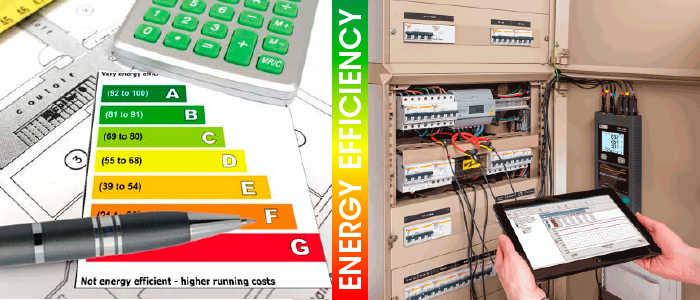The International Performance Measurement and Verification Protocol (IPMVP) is an internationally recognised protocol for making businesses more efficient when it comes to energy use.
Energy efficiency is widely considered the so-called ‘fifth fuel’ as the world looks to move towards sustainable energy production and improvements are already saving 1.4 billion tonnes of oil among 11 developed countries compared to 1970s efficiency levels.
The IPMVP was first developed by a group of organisations under the direction of the United States Department of Energy in the run up to 1994/95 and has become popular across the world as the most effective methodology for increasing energy efficiency.
What are the Phases of the IPMVP?
1. Initial requirements and measurements
In order to properly assess the efficacy of efficiency measures, it is important to first perform exhaustive measurement of the user’s facility. A good starting point is to review bills from energy suppliers as these establish a base level of consumption for the entire facility.
On top of an initial picture provided by historic electricity bills, it is also important to carry out exhaustive measurement because bills only provide a broad picture of consumption and do not allow the minute analysis required to carry out the IPMVP.
The best method of this extensive observation is by using a power energy logger. The use of one or more power energy loggers allows the user to measure important parameters including voltage, current, power factor, harmonics and more at various points throughout a facility.
Targeting of specific ares of a facility can also be carried out using an energy logger and it is important to measure consumption factors over an appropriate period of time so that the base sample is truly representative.
For more information on power energy loggers (PELs), take a look at our dedicated blogpost. We have a large range and useful hire options.
2. Plan and implement solutions
Having established the current consumption situation and defined the most pressing requirements of the IPMVP, the next phase of the protocol is to plan and implement solutions to issues flagged up during Phase 1.
Examples of action taking during Phase 2 include replacing lighting systems, cutting down on ‘out of hours’ energy use, changing command systems for electric machinery and replacing electric motors with more efficient units.
In addition to preventing waste and switching off systems when not in use, another useful method of increasing efficiency involves finding less energy-intensive processes to achieve the same results at every opportunity.
3. Measuring and verifying improvements
Similarly to Phase 1, Phase 3 involves comprehensive measurement of a facility over an appropriate period of time. Power energy loggers should be installed to monitor the system in the same manner as the initial phase measurements.
This then allows the user to quantitively assess the impacts of the changes made during Phase 2 and will hopefully show that the user’s facility now boasts improved efficiency, thus saving financially and environmentally.
4. Ongoing periodic testing
The first three phases of the IPMVP are carried out over a relatively short period in order to try and review and improve the energy efficiency of a facility. The fourth phase, however, is an ongoing project that involves periodic testing of the facility.
Periodic testing is required every 6 to 12 months and must be just as exhaustive as the measurement performed in Phases 1 and 3. All the components of the system must be monitored including lighting networks, single-phase distribution, three-phase networks, uninterruptible power supplies, standby generators and any on-site generation.
NB - You can find out more about energy efficiency, monitoring and a whole range of subjects at Chauvin Arnoux's dedicated site.

